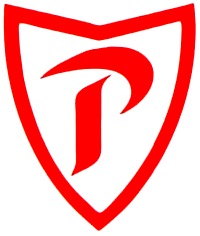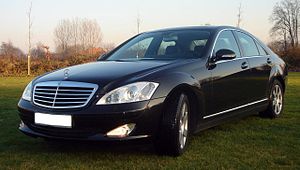Portal:Cars
The Cars Portal A car, or an automobile, is a motor vehicle with wheels. Most definitions of cars state that they run primarily on roads, seat one to eight people, have four wheels, and mainly transport people, not cargo. The French inventor Nicolas-Joseph Cugnot built the first steam-powered road vehicle in 1769, while the Swiss inventor François Isaac de Rivaz designed and constructed the first internal combustion-powered automobile in 1808. The modern car—a practical, marketable automobile for everyday use—was invented in 1886, when the German inventor Carl Benz patented his Benz Patent-Motorwagen. Commercial cars became widely available during the 20th century. One of the first cars affordable by the masses was the Ford Model T, begun in 1908, an American car manufactured by the Ford Motor Company. Cars were rapidly adopted in the US, where they replaced horse-drawn carriages. In Europe and other parts of the world, demand for automobiles did not increase until after World War II. The car is considered an essential part of the developed economy. Cars have controls for driving, parking, passenger comfort, and a variety of lamps. Over the decades, additional features and controls have been added to vehicles, making them progressively more complex. These include rear-reversing cameras, air conditioning, navigation systems, and in-car entertainment. Most cars in use in the early 2020s are propelled by an internal combustion engine, fueled by the combustion of fossil fuels. Electric cars, which were invented early in the history of the car, became commercially available in the 2000s and are predicted to cost less to buy than petrol-driven cars before 2025. The transition from fossil fuel-powered cars to electric cars features prominently in most climate change mitigation scenarios, such as Project Drawdown's 100 actionable solutions for climate change. (Full article...) Entries here consist of Good and Featured articles, which meet a core set of high editorial standards.
 The fleet of flexible-fuel vehicles in Brazil is the largest in the world. Since their inception in 2003, a total of 30.5 million flex fuel cars and light-duty trucks were registered in the country, and over 6 million flexible-fuel motorcycles, both by March 2018. The market share of flex-fuel autos and light commercial trucks represented 88.6% of all light-duty registrations in 2017. There were over 80 flex car and light truck models available in the market manufactured by 14 major carmakers, and five flex-fuel motorcycles models available . Brazilian flexible-fuel vehicles are optimized to run on any mix of E20-E25 gasoline and up to 100% hydrous ethanol fuel (E100). Flex vehicles in Brazil are built-in with a small gasoline reservoir for cold starting the engine when temperatures drop below 15 °C (59 °F). An improved flex motor generation was launched in 2009 which eliminated the need for the secondary gas tank. (Full article...)Selected article - Selected picture of the day
Selected biography -
Michelle Christensen is a U.S. car designer. She was Acura's first female exterior designer. Since 2005 Christensen has worked for Acura and was the lead designer of the second generation Honda NSX. (Full article...)
On this day June 7
Did you know...
Selected quote of the dayThe Aston Martin DB9 is the car that I'd be most likely to sell my children into slavery for. TopicsGeneral imagesThe following are images from various car-related articles on Wikipedia.
CategoriesThings you can do to help If you wish to help, you can:
Associated WikimediaThe following Wikimedia Foundation sister projects provide more on this subject:
Discover Wikipedia using portals |








































































